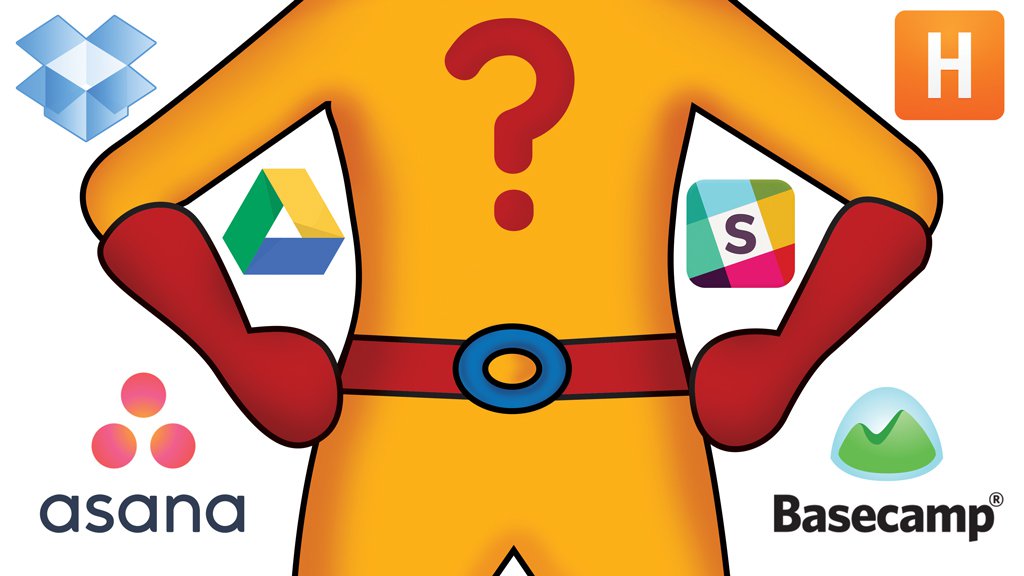
Imagine a superhero. (Hopefully this means you’re picturing yourself in a cape.) This superhero’s power is leaping into businesses and improving their efficiency and profitability by improving their ability to collaborate. Exciting!
The designers in the audience may be wondering what kind of symbol would be on this superhero’s chest. But you, as you dash into your cubicle, tear off your business casual attire, and reveal your alter ego costume with its shining symbol representing the virtues of collaboration and teamwork, know that the most important thing isn’t the clothes you wear—it’s the tools in your toolbelt and the knowledge of how to use them in your head that counts.
Businesses have always looked for tools and processes to increase their collaboration and efficiency. However, the last few years have seen a huge increase in the number and quality of business applications focused on collaboration, efficiency, and productivity. These modern applications are easy to learn, fast to implement, and have great features that take advantage of new technology that make them a joy to use.
If you haven’t reviewed your businesses collaboration tools recently, it may be time to consider some of the new options that are available. They could create a new competitive advantage for you in your market.
So what would be in this superheroic business collaboration toolbelt? Here are five key types of tools along with some recommended options to try.
What’s the status of Project X? What’s the next thing we need to do for Project Y? Who is responsible for Task Z? These are the kinds of questions that are essential to effective project management.
Everyone needs to know what needs to be done, what their responsibilities are, what the plan is for the next steps, and to be able to talk about it and update their coworkers. With a project management app, that can all be done in one place, rather than through fragmented emails, conversations without a record, or lengthy status meetings.
A couple popular modern project management apps are Asana and Basecamp. Both are great, and I recommend trying both to see which one works for your business.
The pony express. The postal service. Telegrams. Email. Instant messaging. Direct brain-to-brain thought transmission.
We haven’t fully reached that last one yet, but we can come close with modern business chat apps.
The foundation of collaboration is communication. Face-to-face conversations are obviously great, but often that isn’t possible, or interrupting someone at their desk isn’t the best way to get an answer to a quick question. Email is tried and true, but in an internal business setting it tends to be slow and disorganized.
As an alternative, instant messaging is faster and less formal than email which makes the tone light and positive. It’s also less of an interruption than a tap on the shoulder because everyone can still choose to respond when it’s best for them, and it keeps a record of all conversations so they can be referenced later.
The obvious recommendation in this category is Slack. If you haven’t heard of Slack yet, it’s likely that you’ll be hearing about it a lot more after this introduction. It’s the fastest growing B2B company in history, and more than a million people use it every day to organize how their teams communicate.
Computers are powerful tools for enabling personal creativity. The Internet is a powerful tool for sharing and collaboration. One of the main process challenges in any business is solving how to share files from each individual person’s hard drive with the team.
Apps like Google Drive, Dropbox, and Box are popular and have great options for businesses.
Time is money and money is business so therefore business is time. If you’re going to optimize efficiency, you have to have a way to track time spent on projects.
One of my favorite apps in this category is Harvest. They have a simple to use interface with a lot of advanced features under the surface. Harvest can even send automatic reminders to clients who haven’t paid their invoices yet.
Here’s the craziest thing about all of these modern tools: they all integrate with one another. You can create Asana tasks from Slack, attach files from Dropbox to Asana, start a Harvest time tracking timer from an Asana task, and at this point probably launch a satellite, conduct a military campaign, or order a sandwich from Slack.
This means that with a little extra effort, you can combine these tools into a fully custom, highly effective collaboration and communication machine, all at a very reasonable cost.
Most of these tools have only become available in the last few years, and they are much higher quality and more effective than older, outdated versions of the same tools. If you haven’t upgraded your toolkit in a while, consider some of these new options and see what effect it has on collaboration in your business.
© Insight Creative, Inc. All rights reserved.